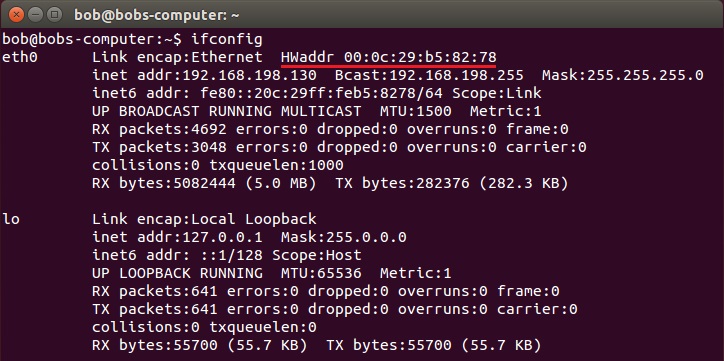

- MAC ON LINUX COMMAND LINE MAC OSX
- MAC ON LINUX COMMAND LINE INSTALL
- MAC ON LINUX COMMAND LINE FREE
- MAC ON LINUX COMMAND LINE MAC
I thought it was something only really advanced users knew anything about. I didn't know anything about it, and it seemed scary and overwhelming. On OS X, ifconfig will work (probably with slightly different syntax), but your changes are likely to be overwritten randomly by the system configuration daemon instead you should edit the network preferences with networksetup, and then let the config daemon apply them to the live network state.You might be like me - I used computers for twenty years without ever touching a command prompt. For example, on linux you'd probably use ifconfig to change your network configuration. ls file1 file2 -l), while most OS X commands require options to come strictly first ( ls -l file1 file2).įinally, since the OS itself is different, some commands wind up behaving differently between the OSes. Similarly, in linux you might use ls -color=auto to get colorized output on macOS, the closest equivalent is ls -G.ĮDIT: Another difference is that many linux commands allow options to be specified after their arguments (e.g. For example, linuxes generally include GNU sed, which uses the -r option to invoke extended regular expressions on OS X, you'd use the -E option to get the same effect. (Update: starting in macOS High Sierra v10.13, you can use sysadminctl -addUser instead.)Īlso, some commands they have in common will have different features and options. On OS X, you generally use the GUI to create users if you need to create them from the command line, you use dscl (which linux doesn't have) to edit the user database (see here). In general, both will have the same core commands and features (especially those defined in the Posix standard), but a lot of extensions will be different.įor example, linux systems generally have a useradd command to create new users, but OS X doesn't. You may also find useful # ~/.bash_aliasesĪlias raked='rake db:drop db:create db:migrate db:seed'Īlias rvm-restart='source '\''/home/durrantm/.rvm/scripts/rvm'\'''Īlias ='cd ~/Dropnot/webs/rails_v3/dmc/'Īlias wf='cd ~/Dropnot/webs/rails_v3/dmc/dmWorkflow'Īlias ws='cd Durrant's answer ably covers the shell itself, but the shell environment also includes the various commands you use in the shell and these are going to be similar - but not identical - between OS X and linux. The first time I did this (without knowing) I redefined ls to be invalid which was a bit alarming until I removed -auto-color !
MAC ON LINUX COMMAND LINE MAC
Note that this is an example of a mac-linux difference because on a Mac you can't have the -color=auto. bash_aliases file and include it with: if then I now placed all my aliases in a separate. bash_profile on OSX) file with aliases, some examples below.
MAC ON LINUX COMMAND LINE MAC OSX
On a final note, I am on Linux (Ubuntu 11) and Mac osX so I use bash and the thing I like the most is customizing the. Zsh Z shell Enhanced, user-friendly ksh-like shell
MAC ON LINUX COMMAND LINE FREE
Tcsh Enhanced C-shell User-friendly and less buggy csh implementationīash GNU Bourne-again shell Enhanced and free sh implementation

Ksh Original Korn shell Richer shell programming environment than shĬsh Original C-shell C-like syntax early versions buggy sh The original Bourne shell Present on every unix system The following table is useful for knowing the various unix shells. There are still some fundamental differences between mac and linux as Gordon Davisson so aptly lists, for example no useradd on Mac and ifconfig works differently. Early implementations were a bit buggy and the programming syntax a bit weird so it developed a bad rap. If you upgraded from or use OS X version 10.2.x, 10.1.x or 10.0.x, the default user shell is tcsh, an enhanced version of csh('c-shell'). If you have previous experience with bash (often the default on GNU/Linux installations), this makes the OS X command-line experience familiar, otherwise consider switching your shell either to tcsh or to zsh, as some find these more user-friendly.

MAC ON LINUX COMMAND LINE INSTALL
If you did a new or clean install of OS X version 10.3 or more recent, the default user terminal shell is bash.īash is essentially an enhanced and GNU freeware version of the original Bourne shell, sh.


 0 kommentar(er)
0 kommentar(er)
